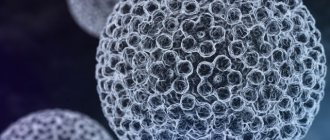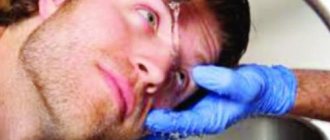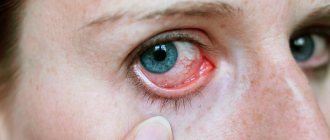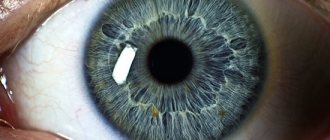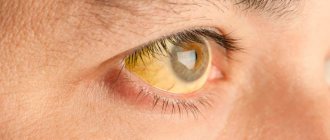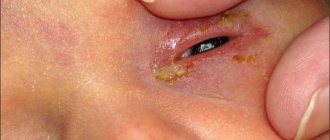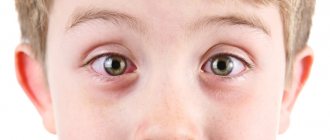When even small bubbles appear on the delicate skin of the eyes, a person feels discomfort, and in some cases, pain in this area. In shape, they can resemble balls filled with a transparent or viscous, thick liquid. The location of such a vesicle or rash can also be different - on the lower or moving (upper) eyelid, under the eyelashes, closer to the eyebrows. Additional unpleasant symptoms are often felt - itching, burning, local hyperemia and redness. The sooner the diagnosis is made and treatment is started, the greater the chances of a speedy recovery without consequences or complications for the organ of vision.
Papilloma
The formation of these tumors is triggered by the entry of the human papillomavirus into the body. By the way, there are several types (strains) of this disease, and each of them has its own characteristics. Infection can occur through close contact with a sick person, as well as through the use of shared hygiene items (if there are microcracks, wounds, or scratches on the skin). This virus may not manifest itself for some time. Unfortunately, it is not possible to completely cure or get rid of this virus in the body. Medicines can only “put him to sleep” and reduce his activity.
Externally, it is quite simple to distinguish papillomas from other types of rashes on the eyelids. They look like small skin growths, that is, their walls and upper part are formed by dense skin, whereas with other diagnoses they usually talk about stretching of the epidermis. The formations are usually painless, including to the touch. They can be single, or form as a whole scattering in various areas near the eyes, more often on the upper and lower eyelids. Often this condition occurs concomitantly with exacerbation of other infectious eye diseases.
Allergy
An allergic reaction to the eyes can manifest itself in different ways - burning, lacrimation, itching, redness, and the appearance of a rash. Many patients complain of a feeling of a veil before their eyes and decreased visual acuity. Various reasons can provoke the formation of bubbles in the eyes, ranging from food and some odors to cosmetics and taking certain medications.
Incorrect therapy or its absence at all leads to a chronic form of allergy, which is much more difficult to cure. Ultimately, the immune system weakens so much that unpleasant symptoms spread to other organs and systems. Thus, there is a high probability of deterioration in the functioning of the joints and the appearance of pain in them.
Conjunctivitis
Here they usually talk about adenoviral conjunctivitis. Adenoviral infection is a disease from the group of acute respiratory viral infections, in other words - a cold, acute respiratory infection or acute respiratory viral infection. Adenoviral conjunctivitis appears against the background of a cold and is its complication. The bubbles that arise can be of various sizes - barely noticeable or quite large. Inside them are clots of infiltrate. Some single bubbles can combine to form larger ones. In this case, they also open together, and in their place a wound is formed into which bacteria from the external environment can easily penetrate.
In addition to the rash, a person may be bothered by a number of symptoms:
- increased lacrimation;
- general hyperemia;
- feeling of sand in the eyes, severe pain;
- purulent discharge from the eyes;
- redness and swelling of the eyelids and conjunctiva.
The disease is also dangerous due to its transition to a chronic form, when a person can occasionally live without visible symptoms, but frequent relapses will not allow him to fully enjoy good vision. Over time, this can lead to a number of unpleasant consequences, including deterioration in visual acuity.
Moll cyst
It is formed as a result of a malfunction of the sweat and sebaceous glands. When the ducts of the gland are blocked, excess secretion accumulates in the subcutaneous layers and begins to slowly stretch the tissue. As a result, a bubble forms on the surface of the skin. Especially often such formations appear on the delicate skin of the eyes, at the edges, under the eyelashes.
For patients, this formation causes almost no discomfort, except in cases of secondary infection (for example, when the capsule shell is injured). In such cases, instead of a vial with transparent contents, the person will experience suppuration, swelling of the area and severe pain. Large Moll cysts are also dangerous, since they are best removed only by a professional.
Important! Once a Moll cyst appears, it is unlikely that it will leave a person forever. It can resolve on its own, but there remains a very high probability of relapse, and a new bubble will appear in the same place.
Ophthalmoherpes
Almost 90% of the entire population of the planet are carriers of the herpes virus (one of its types). This pathogen itself is not dangerous, provided that the human immune system is in good condition. As soon as it weakens, the herpes virus is activated and begins to manifest itself. External manifestations are a rash, blisters with transparent contents. They look a little like blisters, only much smaller. They often appear on the face, especially near the mucous membranes of the lips or eyes, on the eyelids. It is very important that you should under no circumstances try to fix these bubbles yourself! This can provoke further spread of the pathogen to healthy tissue.
With a severe degree of the disease, there is a possibility of the formation of a rash not only on the skin of the eyelids, but also on the cornea. If treated incorrectly or untimely, the outcome can be very disastrous. The patient faces cataracts, glaucoma, and in some cases blindness.
Burn
A burn to the eyelid can be caused, for example, by bending over a hot kettle or pan of boiling water. In this case, the steam instantly penetrates the skin and injures it. But burns can also be chemical. Contact with the skin of the eyelids by aggressive substances can occur when washing (with new detergents), applying makeup (with active acidic components).
A blister, or bubble, from a burn can form immediately or after some time. Inside it is plasma, the liquid part of blood. In this way, the body seems to protect the burned part of the skin from external influences. It is very important to wait for the burn to fully mature, that is, the moment when the liquid inside it becomes cloudy and opaque, and the burn itself begins to dry out and gradually fall off, revealing renewed skin instead of the injured one.
Burns themselves are a fairly complex condition and require specialized treatment. If such formations have formed near the eyes, then no amateur activity is allowed here.
Causes
An unpleasant phenomenon may occur suddenly or brew under the skin for some time. There are several possible reasons why a blister may appear on the eye. The most common of them:
- Bad cold. An example of this is stye, which often appears on the eyelids when immunity decreases.
- Hormonal changes or disruption of the endocrine system.
- Infection with human papillomavirus.
A small blister on the eye is not a disease in itself - it is a symptom of some other disease. An unpleasant phenomenon can serve as a symptom of herpes, allergies or Moll cysts. Among the factors that provoke the development of blisters on the eyelids, doctors classify the following as a separate category:
- severe hypothermia;
- frequent stress;
- nervousness;
- immunodeficiency;
- long-term use of antibiotics.
Ophthalmoherpes
When a bubble filled with a cloudy clear liquid appears on the eyeball, the first thing to suspect is ophthalmoherpes and its most common form - herpetic keratitis. Normally, the human cornea is completely transparent, so it is invisible. During an attack of keratitis, when the herpevirus forms a focus of inflammation, unpleasant symptoms immediately appear in the form of increased lacrimation and hyperemia of the eyeball.
Some patients begin to develop photophobia, a slight tingling sensation in the eyelid, and a feeling of the presence of a foreign body. Sometimes blepharospasm is observed - an involuntary convulsive closure of the eyelid. On the cornea itself, herpes blisters appear in single form, extremely rarely forming extensive ulcerative lesions of the eyelid. Ophthalmoherpes can develop:
- as a result of a recent infectious viral disease;
- with hypothermia;
- due to prolonged insolation (stay in the sun).
Doctors often record the development of herpetic keratitis after injury to the cornea with organic materials - a branch, a nail, paper, a burn from boiling oil, a cigarette. Symptoms do not appear immediately, but after a few days when the integrity of the skin is damaged. After inflammation of the eyelids, vision remains reduced for some time, and blurred vision is present. Scars and cataracts often remain on the cornea after herpes blisters. Often, ophthalmoherpes, even with successful treatment, returns from the slightest decrease in immunity.
Allergy
Another reason for the appearance of blisters on the eyelid is an allergic reaction. The phenomenon is characterized by increased tearing, inflammation of the eyelid, redness, itching and burning. Sometimes the quality of vision may decrease slightly, and there will be a feeling of the presence of a speck in the eye. Without proper and timely treatment, nettle fever and joint pain may occur. Provoke the development of allergies:
- cosmetics;
- household chemicals (in case of accidental contact with the skin of the eyelids);
- Food;
- taking certain groups of medications;
- external factors - plant pollen, animal hair, dust.
Moll cyst
There are many glands on the human body, including the eyelids, that produce the sebaceous secretion necessary to protect against infections. If for some reason the ducts of the gland become clogged, the release of secretion to the surface of the skin is stopped, and excess fluid begins to accumulate under the epidermis, stretching it and forming small bubbles with exudate.
This phenomenon in medicine is called benign Moll cysts. Their features:
- Blisters often appear on the eyelids under the eyelashes or at the edge of the eye. Less rarely, localization of rashes on the mucous membrane of the upper inner eyelid is possible.
- In appearance, cysts look like dense two-chamber capsules covered with a pink mucous membrane.
- If the capsule itself is damaged, the capillaries located in its cavity are also injured, which is why small bluish spots often appear on the eyelid.
- A Moll cyst can manifest itself in different ways, but it itself almost never causes painful discomfort.
Patients do not complain about the blister itself, but about itching, burning, a feeling of the presence of a foreign body in the eye, swelling of the eyelid, irritation from light, and tearfulness. Sometimes a cyst can make it difficult to blink. Only if an infection gets inside the vesicles or the capsule shell is injured, suppuration, severe inflammation and pain may appear. In more severe cases, deterioration in well-being may occur:
- body temperature will increase;
- neuralgic pain will occur;
- weakness will appear.
- Signs of sinusitis in adults
- Phone tracking software. How to determine location by number online and spy program
- Cashless payment: application
Papilloma
These are benign neoplasms, the development and appearance of which is provoked by the entry of the human papillomavirus into the body. Infection occurs through close contact with a sick person, through the use of common household items or cosmetics - through almost imperceptible cracks, wounds or cuts on the skin. The papillomavirus can remain in the body for a long time without manifestations, but when favorable conditions occur, it will begin to become active, causing the appearance of bubbles.
The time from infection to the appearance of the first bubbles varies depending on the resistance of the organism. If the ability of the immune system to resist viruses and bacteria decreases, hormonal changes in the body occur, or chronic diseases worsen, the papillomavirus begins to actively multiply. Externally, the growths look like small seals connected to the skin through a stalk.
Papillomas have a rough surface and are absolutely painless to the touch. Neoplasms can be single or grow in small groups at a short distance from each other. The blisters are localized on the skin of the eyelids and conjunctiva, and patients often complain to the doctor of the following symptoms:
- feeling of a speck in the eye;
- difficulty blinking;
- increased lacrimation;
- inflammation of the eyelid;
- the occurrence of conjunctivitis with frequent relapses;
- redness of the eye.
Diagnostics
The effectiveness of treatment depends on a correctly established diagnosis. The doctor conducts a detailed survey and clarifies complaints. The person must tell why the bubble appeared in the eye or on the eyelid, how quickly it grows, and what sensations it is accompanied by.
Then the doctor examines the eyelids, eyes, and assesses the condition of the fundus at the slit lamp. An ophthalmologist may prescribe laboratory and instrumental examinations:
- CBC to assess the general condition of the body.
- ELISA for detecting viruses.
- Cytological examination of scrapings to evaluate cell characteristics.
- Histological examination of removed elements to exclude oncology.
If the cause of blistering rashes is allergic, it is necessary to identify and exclude the allergen. For this, the person is referred to an allergist.
How to treat
If a transparent bubble appears on the eye, you should not hesitate to visit a doctor, nor should you self-medicate. It's time to go to an ophthalmologist or ophthalmologist, and if necessary, additionally consult with an ENT doctor, therapist, or endocrinologist. There are many medications that help eliminate the causes of blisters. Medicines are prescribed depending on the cause of the disease:
- Treatment of herpes involves the use of local and general medications. The doctor may prescribe Acyclovir ointment for external treatment of the eyelid, drops (Poludan, Oftalmoferon, Aktipol), immunomodulators for oral administration. An antiherpetic vaccine is often included in the course of treatment for herpes conjunctivitis.
- If you have allergies, it is recommended to take a course of antihistamines (Diazolin, Suprastin, Claridol, Trexil). Be sure to eliminate the allergen - replace cosmetics, adjust the diet.
- A Moll cyst goes away on its own within 5-10 days after its appearance, but there are cases when the blisters reach too large a size. In such situations, the doctor will make a careful puncture and remove the accumulation of secretions.
- Dense blisters that appear as a result of activation of the papillomavirus are removed by surgery or laser.
Folk remedies
With the approval of a doctor, blisters can be treated using traditional medicine, but this should be done with extreme caution, avoiding contact of caustic concentrates with the mucous membrane of the eye. Effective folk methods against papillomas are:
- Rowan juice, which is obtained by squeezing ripe fruits. The liquid must be applied to the surface of the bubbles in the morning and evening for two weeks. To prevent relapses, rowan juice can also be used to treat adjacent areas of healthy skin.
- To soften and remove papillomas, traditional healers recommend using aloe. This plant has strong anti-inflammatory properties. A piece of leaf with pulp must be glued to the bottle with a plaster; the leaf is first cleaned of the top rough film. The compress should be applied at night for one to two weeks. For treatment to be effective, it is recommended to use a plant that is at least two years old.
- Banana peel is another effective remedy that has recently received popular love. It is necessary to treat the bubbles until they disappear completely in the morning and before bed.
In case of allergies, along with taking antihistamines, it is recommended to treat the eyes with a decoction of oatmeal, and instill chamomile infusion into the eyelids. Popular recipes:
- Pour a glass of boiling water over one teaspoon of dry chamomile inflorescences. Let it brew for 20-30 minutes, then strain through several layers of gauze. Place the cooled broth in each eye, 2-3 drops three times a day until the unpleasant symptoms completely disappear.
- To relieve the inflammatory process, you can wipe your eyes with the same infusion using a cotton pad or make lotions. It is better to do the procedures in the morning and evening throughout the entire course of drug treatment.
- Take one glass of seeded oats or small oatmeal, pour into a thermos. Pour five cups of boiling water over the cereal and leave for 4-5 hours. Then drain half of the resulting liquid, and cook jelly from the remaining part. Take one glass of the drink in the morning on an empty stomach for a month.
Traditional medicine is rich in recipes that help treat herpes blisters on the eyes, but they can only be used after additional consultation with an ophthalmologist. To eliminate allergic blisters, you can brew medicinal herbs:
- Take 2 teaspoons of dry lungwort. Pour two cups of boiling water. Leave for 2 and a half hours. Strain the cooled solution. Rinse the affected area of the eyelid with it up to 6 times a day for two weeks.
- Take 1 tablespoon of dried arnica flowers. Pour a glass of boiling water over the herb. Leave for 3 hours. Treat the infected area of the eyelid with the prepared liquid every two hours until the symptoms completely disappear.
Treatment of corneal hydrocele
Some authors believe that the condition of acute keratoconus does not require active treatment because it can resolve spontaneously.
Many specialists for acute keratoconus suggest the use of active surgical tactics - injection of autologous blood into the anterior chamber of the eye, bandage strengthening of the cornea and other techniques. A number of surgeons talk about the possibility and even advisability of emergency penetrating keratoplasty in this condition. Other doctors recommend active drug therapy to treat acute keratoconus. Carrying out biomicroscopy in the cold period in patients who have suffered acute keratoconus makes it possible to accurately identify the zone of rupture of Descemet's membrane and the presence of a rough corneal scar passing through all its layers. The biomicroscopic picture after rupture of Descemet's membrane in the case of acute keratoconus in the English-language ophthalmological literature is called the “fish mouth” symptom.
Drug treatment
- Instillation of glucocorticoids and antibiotics (or their combination - Tobradex) - 4 times a day
- Instillation of non-steroidal anti-inflammatory drugs - NSAIDs (Broxinac) - 1 time per day
- Hypotensive (pressure-reducing) drops (Timolol) - 1 time per day
- Injections of glucocorticoids under the conjunctiva (Dexamethasone, Diprospan)
- Epithelializing and root-protective agents (Oquis, Koreneregel)
- Antiallergic drops and antihistamines (in injections and tablets) - if you have allergies
Surgery
- Injection of the patient's own plasma into the anterior chamber of the eye
- Integumentary keratoplasty with amnion or the patient's own conjunctiva
- Penetrating keratoplasty (rare), more often - after the acute process has subsided
Prevention
Blisters on the eyes are highly treatable and rarely lead to serious complications, but like many other diseases, they are best prevented. To do this, you need to follow simple rules of prevention:
- To avoid mechanical damage to the eyelid, try not to rub your eyes.
- Follow the rules of personal hygiene: use only individual bath accessories, regularly clean your eyelids of dust, dirt, and cosmetics.
- Use only high-quality hypoallergenic cosmetics.
- Carefully monitor your health and treat infectious diseases in a timely manner.


